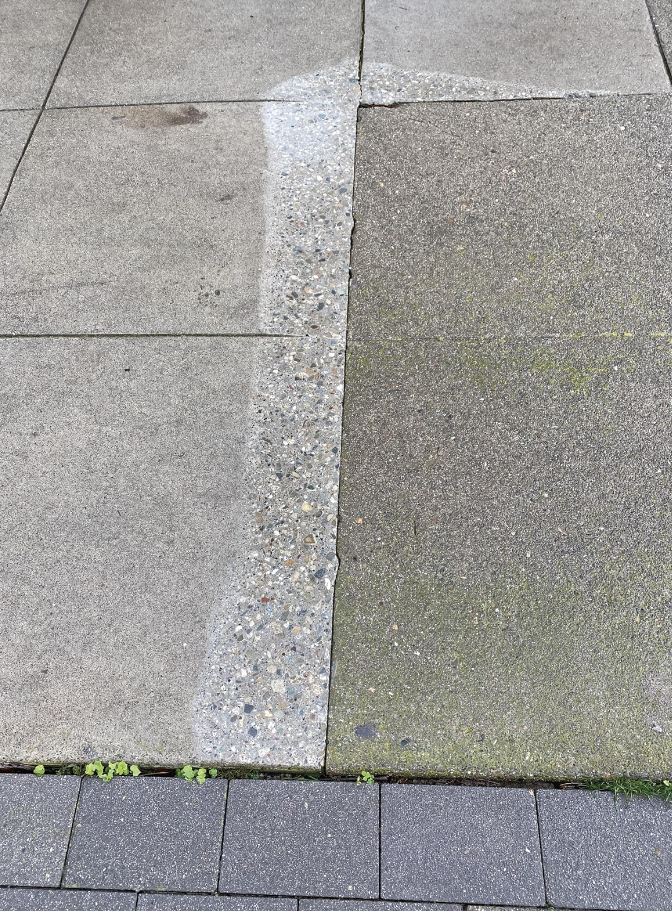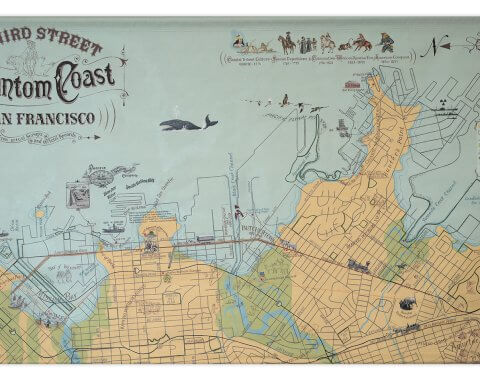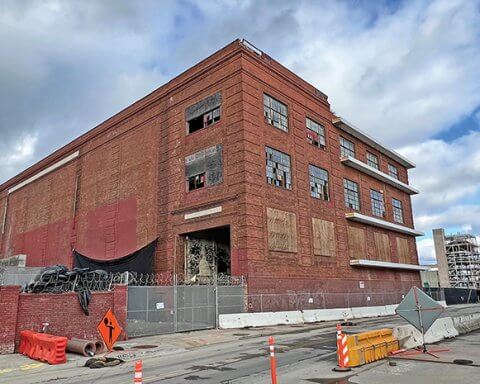
Pedestrians throughout San Francisco have noticed what appear to be random incidences of the grinding down of portions of sidewalks. The patches of polished cement are sometimes adjacent to trees. They often appear nearby unresolved cracks, bumps, and uplifted pieces of cement.
The polishing is being executed through StreetTreeSF, managed by the San Francisco Public Works’ Bureau of Urban Forestry. Under the program street trees are pruned and sidewalks are supposed to be repaired, with a focus on uplifts caused by plants and dead roots.
StreetTreeSF was launched in 2017 to help maintain roughly 125,000 street trees and adjacent sidewalks. Funds are supposed to be spent as needed, principally to address pedestrian safety issues. Repairs focus on areas with vulnerable populations and high perambulator traffic, including sites near hospitals, senior centers, schools, and transit stops.
“Public Works urban forestry inspectors are our first line of defense. If sidewalk uplift is not tree-related, we cannot use tree maintenance funds for the repair. If it is tree-related, the inspectors flag it as a priority for our Precision Concrete Cutting, our slicing contractor, and Public Works cement crews,” said Christopher Heredia, Bureau of Urban Forestry public information officer.
StreetTreeSF repairs trees and sidewalks in zones identified as high-injury corridors by Vision Zero, the City’s road safety policy. In addition, StreetTreeSF reviews 311 calls about tree-related sidewalk uplift, some of which are forwarded to Precision. Under company, rather than municipal, policy, Precision completes jobs within 24 hours Monday through Friday.
Heredia said repairs needed in high-traffic pedestrian corridors or near vulnerable populations are flagged as top priority.
Typically, Precision’s work involves horizontal sidewalk slicing, a process of cutting through cement grids. Slicing reduces trip hazards from one-quarter inch to more than two inches in height. StreetTreeSF contracts with Precision to repair spots with sidewalk uplift of two inches or less. Areas that exhibit uplift of more than two inches go into queue for repair by Public Works’ cement shop, restored as time and resources allow.
“Slicing versus demolishing and replacing sidewalks around street trees saves millions in taxpayer dollars yearly. Slicing is better for the environment. It eliminates the need for demolished concrete to be transported to and disposed of in landfill,” said Heredia.
A 2021, Board of Supervisors Budget & Legislative Analyst performance audit of StreetTreeSF found that while the overall condition of the City’s streets improved between 2011 and 2021, pavement condition varied across neighborhoods. In 2019, close to 30 percent of District 10’s street segments were ranked as failed, poor, or at risk, with the highest percentage of failed sections in San Francisco. Less than 10 percent of District 11’s segments were categorized as failed, poor, or at risk. District 6 had no failed street segments at all. Redistricting in 2022 may have altered district-specific findings.
StreetTreeSF completes 25,000 to 30,000 repairs a year, at a typical cost of $75 per restoration. The City allocated $7.3 million for a two-year contract with Precision, which expires June 5, 2025. Precision was selected through a competitive bidding process. Monies for tree-related sidewalk repairs come from the City’s tree maintenance fund, a $19 million general fund set-aside.
“What I find notable is that the sidewalk may be ground down a few feet away from areas that remain quite rough, with tripping hazards,” said former Potrero Hill resident, Debbie Findling, who now lives on Liberty Hill. “It’s as if the City pays to pick up specific pieces of litter, and not others. Plus, often the grinding seems nowhere near a tree.”
“Sidewalk slicing is a practical solution to a sidewalk lifting from tree roots. It’s far less costly and disruptive than replacing sidewalk pavers. I speak from experience since I repaired many sidewalks in my career as a contractor,” said Keith Goldstein, Potrero-Dogpatch Merchants Association president.



